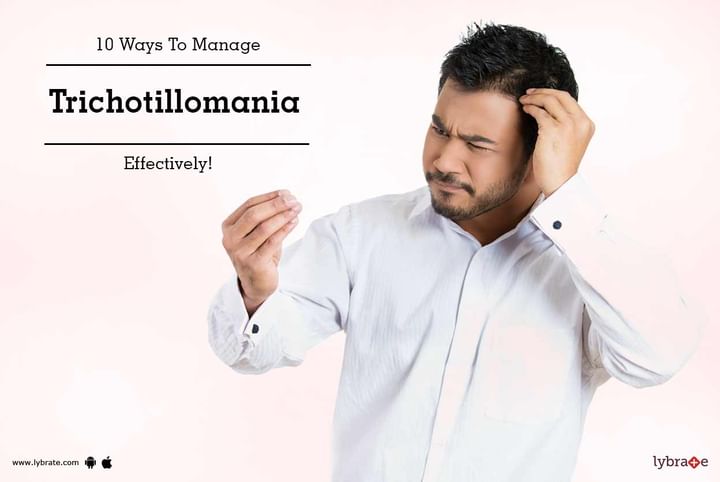Get the App
For Doctors
Login/Sign-up
Last Updated: Apr 08, 2023
BookMark
Report
10 Ways To Manage Trichotillomania Effectively!
Trichotillomania is a condition that urges a person to pull out hair from eyebrow, scalp and other parts of the body. This can lead to bald spots and several other complications in the body. Compulsive hair-pulling often starts in the teenage years.
Trichotillomania coupled with depression can lead to social and work-related impairment in a person. Hair-pulling, therefore, is a serious condition that a person should get rid of. Here is a list of 10 ways to manage trichotillomania effectively:
- A plan to stop trichotillomania: It is important to notice when the urge of pulling the hair starts. Once this is being identified, it is time to interrupt the chain of feelings and listen to positive reminders in the head. Keeping a journal to note down the timings of hair-pull can help to identify a pattern. The time chart can then be used to keep one engaged.
- Eliminate stress: It has been found that stress plays a pivotal role in hair-pull. It is, therefore, wise to prepare a list of activities that can cause stress. Once the list is prepared, each activity can then be analyzed individually and tackle accordingly. Thus, hair-pulling can be avoided.
- Muscle relaxation: This is another method to release stress and refrain from trichotillomania. All it requires is to tighten the muscle for 5 seconds and then make the muscles loose. It reduces muscle tension and relaxes the body.
- Think positive: Negative thinking is certainly one reason for hair-pull. Refraining from the fear of failure, negative thinking, too-much critical thinking etc. can help a person stay away from tension and eschew the habit of hair-pull every now and then.
- Try Exercise: Various studies have shown that regular exercise regimen can go a long way in cutting down the tendency to pull hair. With exercise, the body produces an increased number of endorphins. The latter is believed to be the hormone that results in positive thinking.
- Get sleep: Getting enough sleep is another crucial step towards eliminating Trichotillomania. Eight hours of sleep is crucial for the body to function properly. It fuels the body with enough energy and positive thought to sail through the day without having the urge to pull-hair.
- Talk it out: It has been found that talking it out can help a great deal to reduce the tendency of hair-pull. It makes sense to talk to close friends, family, and relatives about the apprehension and other negative news that may be bothering an individual.
- Consult a health professional: A doctor is the best bet when the disorder has been persistent for a long time. He can give sound counsel on the ways to cope up with the disorder and chart out a plan to get permanent relief from the condition.
- Medication: If a doctor feels that the condition has surpassed the state of habits and lifestyle changes, he might prescribe drugs to reduce the symptoms and get relief from depression, anxiety, fluctuating emotions resulting in less pulling of hair. Some of the common medicines that are prescribed by medical professionals include Olanzapine, Fluoxetine, and Aripiprazole.
- Find a support group: For those who are not willing to take a bet on doctors and medications, one best way to eliminate this condition is to join a self-help group. They act as a learning center and can greatly help to cut down the habit of hair-pulling.
In case you have a concern or query you can always consult an expert & get answers to your questions!



+1.svg)
